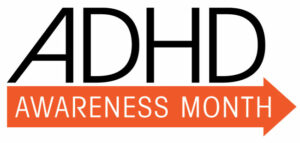
AD/HD, or Attention Deficient Hyperactivity Disorder, receives its share of misinterpretation. The truth is, AD/HD does not look the same on everyone. While educators at Summit Academy Schools are well aware of AD/HD’s multiple facets, the public, in general, is often misinformed by myths that typecast children with AD/HD. For AD/HD Awareness Month, October, Summit Academy Behavior Specialist Laura Rickard, M.Ed., LPC, dispels the myths and provides the facts about AD/HD.
1. AD/HD is a medical condition.
AD/HD is a brain-based medical condition, according to Rickard. She says, like any other medical condition such as hypertension or diabetes, AD/HD requires a medical diagnosis.
“If a child has AD/HD, it has nothing to do with what a grandparent or parent did, or what the child did. It’s just the way their brain developed,” Rickard explains.
Parents and guardians who suspect their child may have AD/HD should start the process of investigation with their pediatrician or family physician, who can refer them to a neuropsychologist or child development specialist. Families who usually turn to urgent care centers for medical care should refer to their school principal or counselor who can point them in the direction of the right community resource, advises Rickard.
 2. One size does not fit all.
2. One size does not fit all.
As of 2016, 6.1 million children in the United States between the ages of 2 and 17 were diagnosed with AD/HD, according to the Centers for Disease and Control Prevention. Despite its prevalence, AD/HD does not appear the same in everyone. It may present itself as inattention in some, as hyperactivity and impulsivity in others, or as a combination of both inattention and hyperactivity/impulsivity in yet others, according to Rickard.
In children 16 years old and younger, telltale signs of inattention are forgetfulness, distraction, head in the clouds, losing items, difficulty organizing activities, avoiding tasks that require mental effort over a long time period, failure to finish or follow through on an activity or to give close attention to details, and making careless mistakes, among others.
Children with hyperactivity and impulsivity, on the other hand, may fidget, leave their seats, run about or climb at inappropriate times, lack ability to work or play quietly, talk excessively, interrupt, and have difficulty waiting their turn, describes Rickard.
While younger children are often excused or given grace for their actions, adolescents are commonly mislabeled as ill-behaved, disrespectful or lazy, explains Rickard.
“Adolescents frequently have real trouble with relationships, with general communication, and with advocating for themselves and setting and reaching goals. These are considered a normal part of development. All of this makes this demographic much more at risk for smoking or vaping, and drug and alcohol use as means of self-medicating,” says Rickard. She adds that depression and anxiety are also common in children with AD/HD. “My suggestion for folks working with someone with AD/HD or who love someone with AD/HD is to allow for the possibility that whatever annoying, challenging or upsetting behavior this person is displaying may actually not be under their control.”
3. AD/HD is not exclusively managed by medication.
“There is no one right way to treat and manage AD/HD,” says Rickard. She points out that while medications have been scientifically proven to decrease hyperactivity and increase focus, they may not be the only solutions.
“A general approach that I support for parents or guardians who are beginning the process of diagnosis and treatment is to think of AD/HD like other medical conditions,” Rickard says.
Using the example of treatment for slight high blood pressure, Rickard says a physician may prescribe lifestyle changes such as walking daily, losing weight and reducing fried and processed foods. Similarly, if a child or adolescent is displaying fairly mild symptoms of AD/HD, the consulting professional may suggest trying some family changes, such as repeating a consistent routine and schedule daily, having a daily electronic or dry-erase “to do” list for children to guide them through their daily tasks, and using a smartwatch to sound reminders for various responsibilities around the house. For school, parents/guardians may consult with school personnel about initiating an Evaluation Team Report (ETR) for a 504 Plan (provides accommodations in school) or an Individualized Education Program (IEP – provides Specially Designed Instruction, or SDI).
“However, if the person with AD/HD is in danger of harming themselves or others, is functioning poorly and their AD/HD symptoms are affecting the quality of their and their family’s life, then serious consideration should be given to trying medication at the recommendation of an appropriate medical professional” Rickard says.
While medication is helping control severe symptoms in the short term, this time can also be used to build skills related to symptom management. During this period, a person with AD/HD — with their family’s support — might employ techniques such as developing a daily deadline schedule or allotting time periods to exercise or unwind throughout the day.
4. AD/HD Can Boost a Future
As prompt decision makers, proficient problem solvers and creative thinkers, people with AD/HD bring attributes of success to several professions that allow them to leverage their skills.
“People with AD/HD brains are amazing. They tend not to be stuck with rules. They think outside the box and have the ability to respond quickly,” says Rickard. People with AD/HD often make great first responders, entrepreneurs, techies, innovators, writers, artists and dancers, she says.
Summit Academy Understands and Nurtures Children with AD/HD
At Summit Academy, all children are seen as capable scholars who are expected to learn and grow, explains Rickard. She underscores how Summit Academy’s small classes allow for optimal academic and social support. For instance, a fidgeting student can take a quick break or a teacher can review and break down a lesson for a child who is not fully focused.
In addition, Summit Academy staff use evidence-based approaches to support students with AD/HD. They apply therapeutic martial arts, positive behavior interventions and supports, social emotional curriculum and instruction, trauma-informed care, and restorative practices to help students develop social, emotional, behavioral, academic, communication and physical skills they can carry through life, Rickard describes.
At Summit Academy, a student with AD/HD or other neurodivergence is in the majority. “This results in each student being held to their own abilities and standards and not a one-size-fits-all measurement,” Rickard explains.
Parting advice …
- Support children with AD/HD in a way that allows them to talk about their challenges.
“Be curious with them in a supportive way,” says Rickard “You may say to them, for example, ‘Hey, I’ve noticed you’re really struggling to get your homework done. What happens when you think about having to do your homework?’”
- Be brain-based, not character based. Think: “Your brain seems to make it difficult for you to finish this chapter.” Avoid comments such as “Why can’t you get things done?” or “Why are you so lazy?”
- Seek expert professional care and do your own homework. “There are innumerable podcasts, books, videos and articles about AD/HD that can be a starting point for family members and loved ones,” Rickard says.
